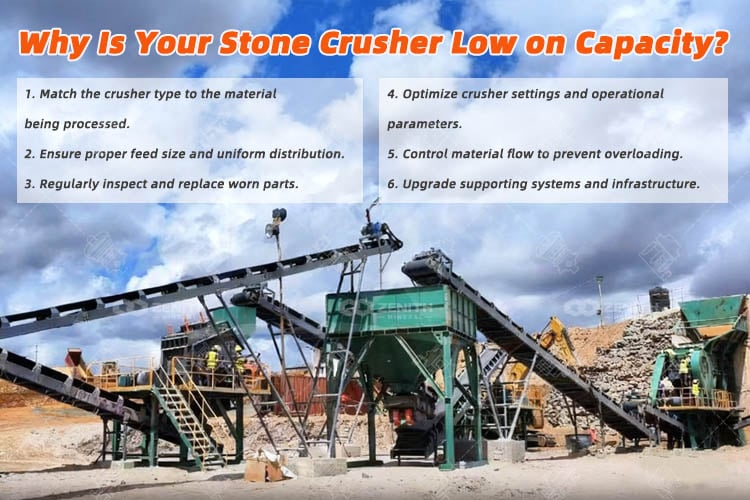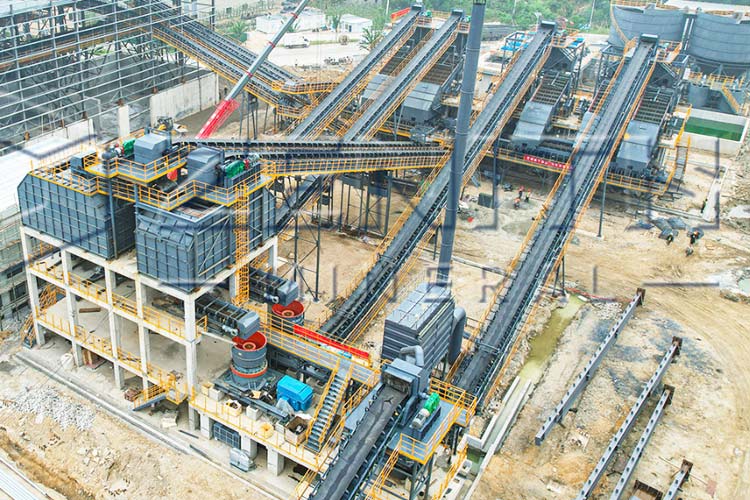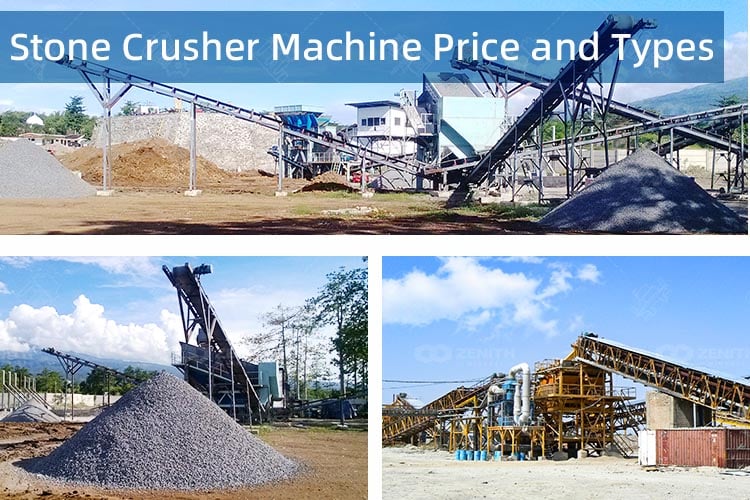A Step-by-Step Guide to Selecting Your Stone Crusher
Choosing the right stone crusher is a critical decision that can significantly impact your profitability in aggregate production. With a myriad of options available, the "best" crusher is not a one-size-fits-all model but rather the one that aligns seamlessly with your specific operational requirements. This guide offers a structured, step-by-step approach to help you navigate the complexities of crusher selection. By analyzing your feed material, defining your desired output, and evaluating your operational needs, you can make an informed investment that will deliver long-term value and maximize your return on investment.
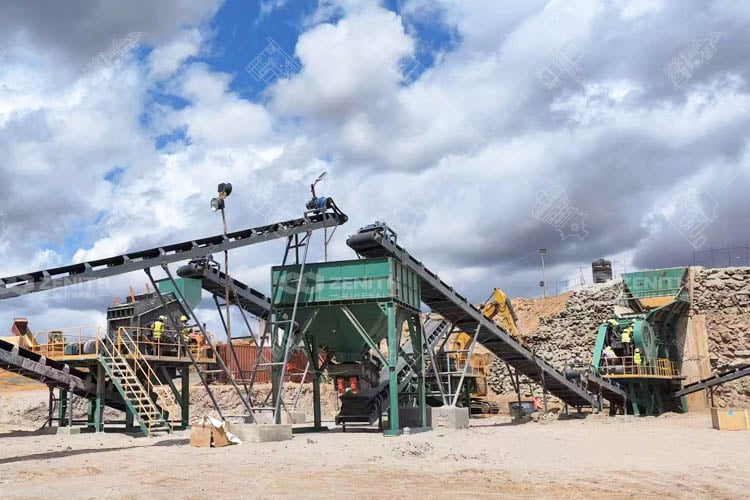
Step 1: Analyze Your Feed Material
The character of your raw material is the primary dictator of your crusher choice.
- Hardness & Abrasiveness (e.g., Granite, Basalt):
- Challenge: High wear on wear parts.
- Recommended Models:Jaw Crusher (for primary) + Cone Crusher (for secondary). Cone crushers are exceptionally well-suited for hard, abrasive materials due to their gradual compression action and the protective rock-on-rock layer that forms in the chamber.
- Less Abrasive, Soft (e.g., Limestone, Sandstone):
- Challenge: More prone to generating fines; may clog if sticky.
- Recommended Models: Impact Crusher (HSI or VSI). Impact crushers are highly efficient here, producing a well-shaped product and handling medium-hardness rock effectively. A Jaw Crusher alone may also suffice for a single product.
- Construction & Demolition (C&D) Waste (e.g., Recycled Concrete, Asphalt):
- Challenge: Contaminants like rebar, wire, and wood.
- Recommended Model: Mobile Impact Crusher. This is the industry standard for recycling. Their open rotor and hydraulic adjustment allow them to handle uncrushable materials better than cone crushers. Many come with magnets to remove metal.
Step 2: Define Your Desired Final Product
The required output specifications are your next major filter.
- Need a Single, Coarse Aggregate (e.g., Base Course for roads):
- Simple Solution: A single Jaw Crusher set to a large closed-side setting (CSS) might be sufficient.
- Need Multiple, Spec-Specific Products (e.g., 3/4" chip, 3/8" pea gravel, concrete sand):
- Primary Jaw Crusher: Breaks down large rock.
- Secondary Cone or Impact Crusher: Refines the material.
- A Screening Plant (Essential): Sorts the crushed material into different sizes, sending oversized material back to the secondary crusher.
- Need High-Quality, Cubical Product (e.g., for asphalt or concrete):
- Best Models: Cone Crushers and Vertical Shaft Impactors (VSI). These machines are champions at creating the well-shaped, angular particles critical for strong asphalt and concrete.
- Need Manufactured Sand:
- Best Model: A VSI Crusher is unparalleled. It uses a "rock-on-rock" crushing action to fracture stone along its natural cleavage lines, creating cubical, well-graded sand.
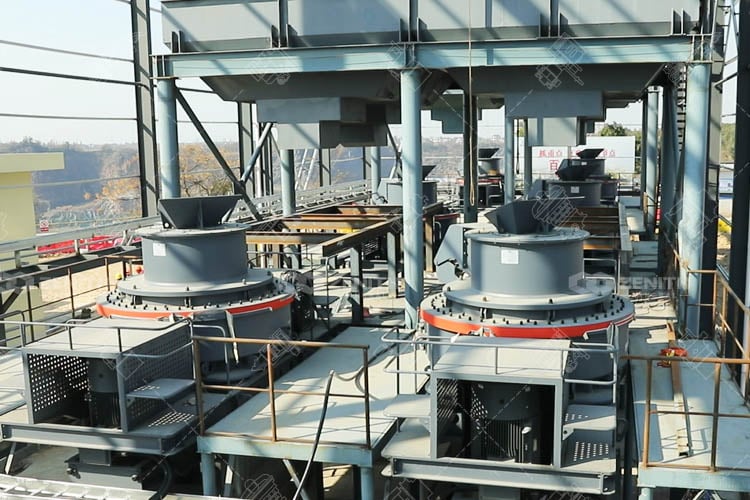
Step 3: Evaluate Your Production & Mobility Requirements
Your operational scale and site logistics will guide the configuration.
- High-Capacity, Fixed Location (Quarry):
- Solution: A stationary crushing plant. This is a permanent installation with conveyors connecting individual crushers (jaw, cone, screens). It offers the highest efficiency and customization for large-volume, long-term production.
- Multiple Job Sites, Remote Locations, or On-Site Recycling:
- Solution: A Mobile Crusher (track-mounted or wheeled). This is the ultimate choice for flexibility.
- Mobile Jaw Crusher: For primary crushing on-site.
- Mobile Cone Crusher: For secondary crushing on-site.
- Mobile Impact Crusher: A versatile "all-in-one" solution for primary and secondary crushing, especially for recycling.
- Low Volume, Simple Projects (e.g., rural farm roads):
- Solution: A small, portable Jaw Crusher or a compact impact crusher may be all you need. Renting a machine for the project duration is also a cost-effective option.
Step 4: Match the Crusher to Your Need (Quick-Reference Table)
| Your Primary Need |
Recommended Crusher |
Key Reason |
| Primary Crushing of Hard Rock |
Jaw Crusher |
Robust, reliable, and efficient first reduction. |
| Producing High-Quality Aggregate |
Cone Crusher |
Creates well-shaped, cubical end products from hard rock. |
| Recycling (C&D Waste) |
Mobile Impact Crusher |
Handles contaminants and is highly versatile/mobile. |
| Producing Manufactured Sand |
VSI Crusher |
Specialized "rock-on-rock" action for perfect cubical sand. |
| An All-in-One Solution for Medium-Hard Rock |
Horizontal Shaft Impactor (HSI) |
Can act as both primary and secondary crusher in one unit. |
| Maximum Flexibility & On-Site Crushing |
Mobile Jaw, Cone, or Impact Crusher |
Brings the crusher to the rock, eliminating trucking costs. |
Beyond the Machine: Other Critical Considerations
- Total Cost of Ownership (TCO): Don't just look at the purchase price. Consider:
- Wear Parts Cost: How expensive and long-lasting are the jaw plates, blow bars, and mantles?
- Fuel/Power Consumption: How efficient is the machine?
- Maintenance Downtime: How easy is it to access and service key components?
- After-Sales Support: A reliable local dealer who can provide spare parts and technical service within hours is invaluable. This is often more important than a slight price difference between brands.
- Resale Value: Established, reputable brands typically have a much higher resale value.
Selecting a stone crusher is not merely a transactional decision; it is a strategic investment that requires careful consideration of various factors. By thoroughly analyzing your material characteristics, defining your product goals, and assessing your operational requirements, you can confidently choose the right model that minimizes your cost-per-ton over its entire lifespan.


